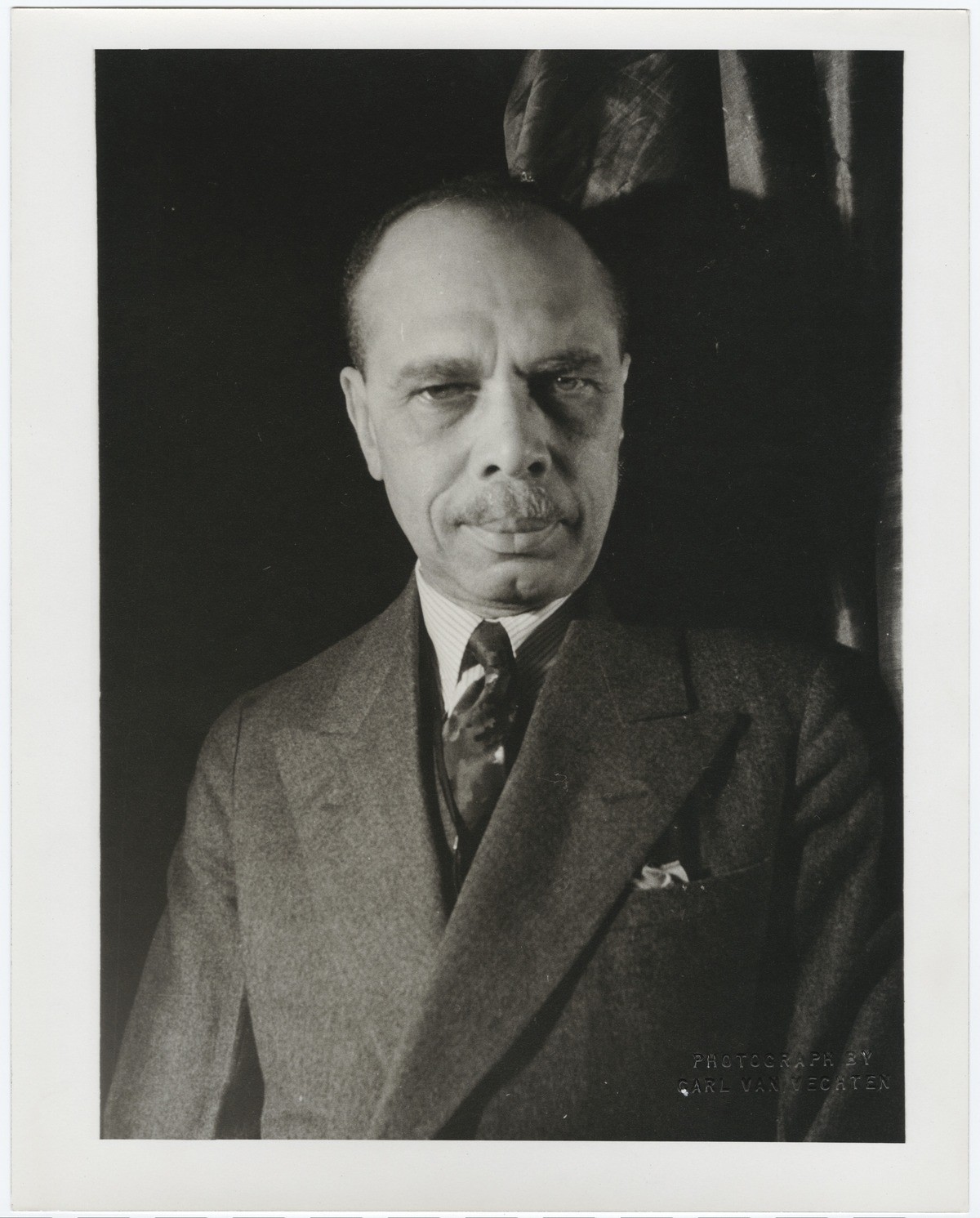The James Weldon Johnson Memorial Collection
of African American Arts and Letters
Founded in 1941 by Carl Van Vechten, this collection stands as a memorial to Dr. James Weldon Johnson and celebrates the accomplishments of African American writers and artists, beginning with those of the Harlem Renaissance. Grace Nail Johnson contributed her husband’s papers, leading the way for gifts of papers from Dr. W. E. B. DuBois, Walter White and Poppy Cannon White, Dorothy Peterson, Chester Himes, and Langston Hughes. The collection also contains the papers of Richard Wright and Jean Toomer, as well as g roups of manuscripts or correspondence of such writers as Arna Bontemps, Countee Cullen, Zora Neale Hurston, Claude McKay, and Wallace Thurman.
Representative manuscripts suggest the richness of the collection: Richard Wright’s Native Son ; Jean Toomer’s Cane ; Zora Neale Hurston’s Their Eyes Were Watching God ; W. E. B. DuBois’s “The Renaissance of Ethics,” his Harvard thesis with annotations by William James; James Weldon Johnson’s Autobiography of an Ex-colored Man and God’s Trombones; and Langston Hughes’s The Weary Blues . Examples of the abundant correspondence are letters between Owen Dodson and Adam Clayton Powell, Joel Spingarn and W. E. B. DuBois, Georgia Douglas Johnson and William Stanley Braithewaite. The correspondence of Dr. Johnson and Walter White documents the early history of the NAACP. Also present are music manuscripts by W. C. Handy, J. Rosamond Johnson, and Thomas “Fats” Waller, among others.
Carl Van Vechten photographed hundreds of his friends including all the persons mentioned above as well as Alvin Ailey, Marian Anderson, Pearl Bailey, Josephine Baker, Ella Fitzgerald, Billie Holiday, Eartha Kitt, Arthur Mitchell, Paul Robeson, Margaret Walker, and Ethel Waters, to give but a sampling. These photographs, combined with those collected by Langston Hughes and Richard Wright, form an important visual record of artists, writers, actors, musicians, and politicians active in the United States from the 1920s through the 1950s. Sculpture by Richmond Barthé, Augusta Savage, and Leslie Bolling, drawings by Mary Bell, a portrait head of Ethel Waters by Antonio Salemme, as well as commemorative medals and prints are among the many works of art in the collection. Added in the 1990s, the Randolph Linsley Simpson Collection of photographs of and by African Americans contains over twenty-five hundred images from across the nation. Its formats span the history of photography, from Daguerreotypes and cabinet cards to photographic postcards and snapshots from 1850 to 1930.
James Weldon Johnson and his brother, J. Rosamond Johnson, formed a successful team of lyricist and composer best known for the anthem “Lift Every Voice and Sing.” Less well remembered are the many popular hits they sold as sheet music such as “Under the Bamboo Tree.” They collected sheet music by other African American composers and their collecting pattern continues.
Image: James Weldon Johnson, photographed by James Allen
